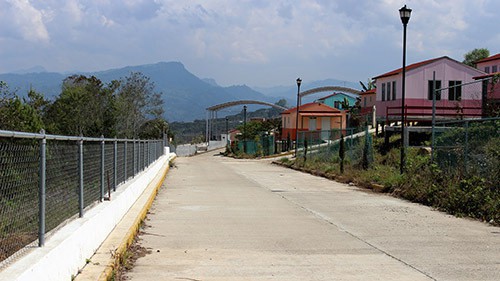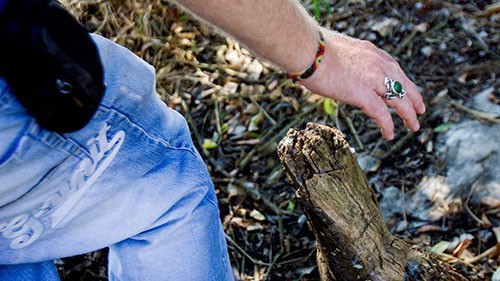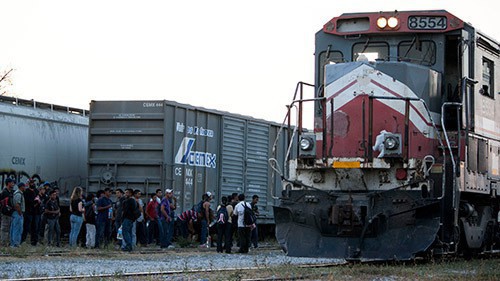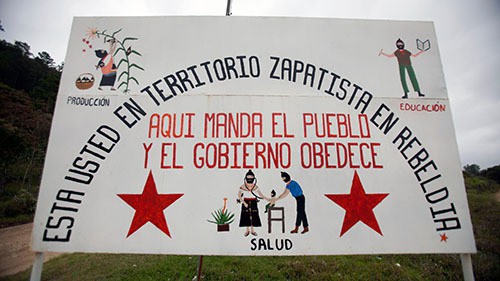
NAFTA an empty basket for farmers in southern Mexico
By Brittany Elena Morris / Cronkite Borderlands Project
Published Sept. 25, 2014
BUENA VISTA, Chiapas, Mexico – Moises de la Cruz grows corn on a 7-acre plot of mountainous land 120 miles north of the Mexico-Guatemala border just as his father did and his father before him.
He has never heard of the North American Free Trade Agreement but is profoundly aware that his life as a farmer has drastically changed over the past 20 years.
De la Cruz now has to pay for costly pesticides and rent tractors to keep pace with neighboring farmers. He has taken a second job as a construction worker in San Cristóbal de las Casas almost two hours away to make ends meet because the market for locally produced corn has dried up.
He, like other small-scale farmers in Southern Mexico, is feeling the impact of modernization and the expanded trade brought on by NAFTA.
“Farming is not the same,” De la Cruz said with an ear of corn in his dirt-caked hands. “If my father could see it today he would die again, this time from shock.”
When the agreement between the United States, Mexico and Canada went into effect in 1994, it removed nearly all trade barriers between the countries. Among the industries affected was agriculture, forcing small Mexican farmers into direct competition with big American agribusiness. Cheap American corn – heavily subsidized, mechanized and genetically modified – soon flooded the Mexican market to the detriment of local farmers.
As U.S. farmers exported their subsidized corn to Mexico, local producer prices plummeted and small farmers could no longer earn enough to live on. Rural farmers left Southern Mexico in droves and migrated north, spurring increasing numbers of undocumented immigrants to the U.S. from Southern Mexico states.
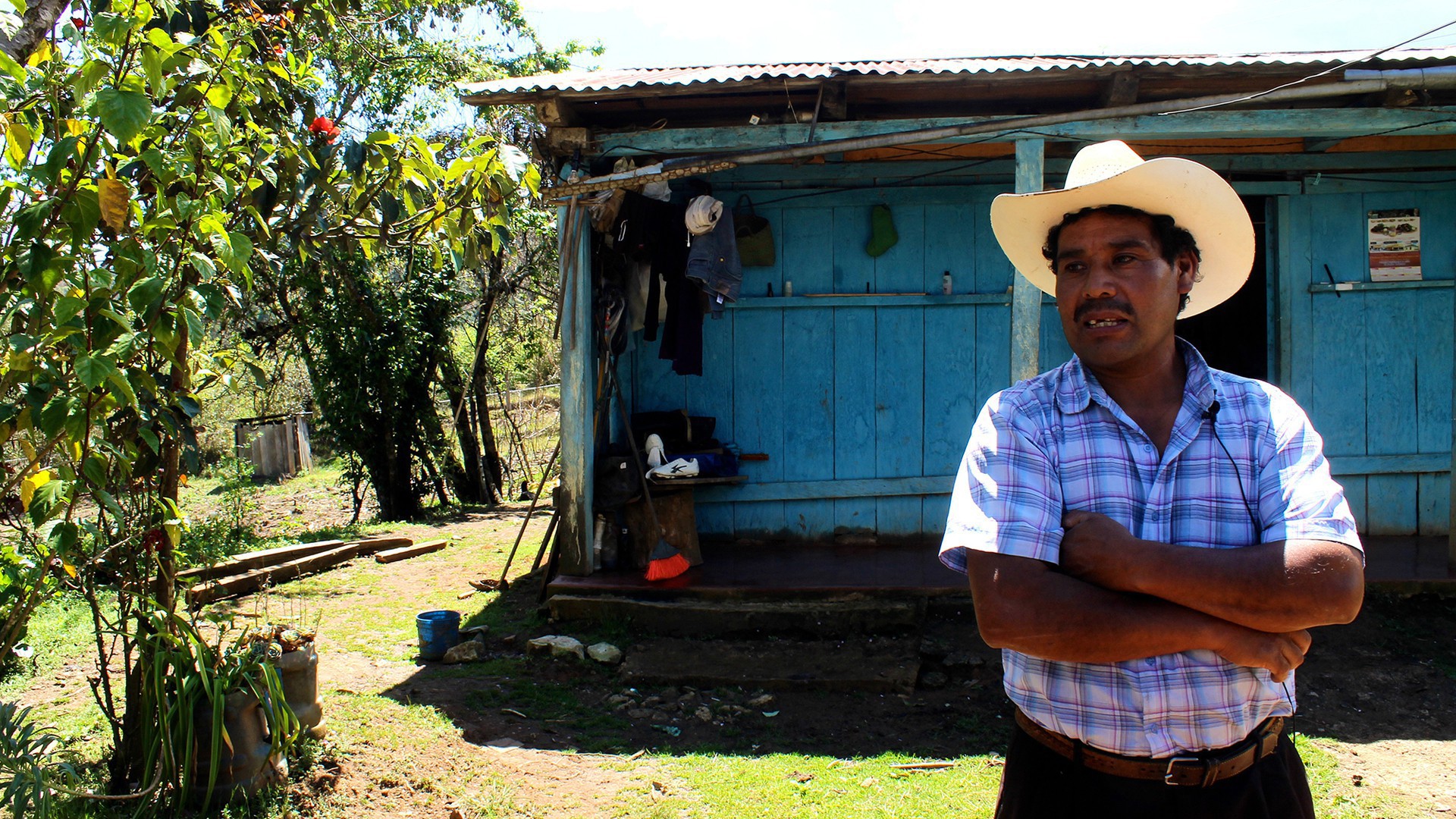
De la Cruz, his wife Rosa, their 20-year-old daughter Isabel and their 18-year-old son Felix stayed behind. Their lives revolve around the two mud huts they live in. One houses their clay oven to make bread. Adjacent to the oven are four wooden beams precariously built around a small circle of medium-sized stones that encase a peaceful fire. This is the family’s stove. Every day, without fail, they make corn tortillas.
The other hut directly across from the “kitchen” is festively painted blue and has one twin mattress and a treasure chest. Inside the chest are prized possessions and goods for honored guests: an old Dell laptop, a cellphone, a 2-liter bottle of Coca-Cola and a roll of toilet paper. The family of four takes turns sleeping on the bed.
What the de la Cruz family lacks in material goods they make up for in their bucolic setting. Buena Vista, which translates to “good view,” has endless rolling hills covered in verdant grass, wildflowers, cornfields and sugar cane.
De la Cruz cultivates this land, which sits directly behind his two huts, and another few acres more than a mile away. Snoozing between the corn stalks are his three pigs – weighing more than 120 pounds – each – and a piglet. Countless chickens toddle around too.
This is de la Cruz's life work. It is not unlike the thousands of farmers who use their generationally owned plots to feed their families and make a little money.
The money is elsewhere: in 2012 the U.S. and Mexico exchanged more than $540 billion in goods. This means more than $1 billion in goods crossed the border every day, $1 million every minute, according to the U.S. Bureau of Economic Analysis.
While leaders of Mexico, the U.S. and Canada laud NAFTA as opening trade and economic opportunities for the three North American countries, Mexico’s southern states clearly didn’t benefit. More than 70 percent of the population in Chiapas lives in poverty, including 1.63 million in extreme poverty, according to Mexico’s National Council for the Evaluation of Social Development Policy.
Julian Nasser, secretary of agriculture in Chiapas, acknowledged agricultural policies under NAFTA did not benefit subsistence farmers like de la Cruz.
“NAFTA was never meant for them,” he said. “It’s unfortunate but true.”
Nasser figuratively described NAFTA like this: The benefits of the trade agreement were put in a basket on a river at the northern border, destined for South Mexico farmers. As the basket traveled from one end of the country to the other, there were fewer and fewer benefits until farmers – de la Cruz among them – were left empty-handed.
That said, Nasser added the little bit of public aid to help struggling farmers in Mexico commonly goes to large agricultural businesses in northern states, which have the potential to compete in the global marketplace on a large scale.
“In the long run, small farmers in Mexico will not be able to compete with the Americans’ heavily subsidized and mechanized farms, or Mexican farmers in the north,” he said.
One advantage the north has over the south is the availability of technology. Mechanized tractors spray acre after acre of crops with pesticides and require little to no oversight by farmers.
De la Cruz, on the other hand, taught 18-year-old Felix how to spray pesticides on corn before he even started school. Together the men travel to buy the expensive powder in town and mix it with water in a large plastic jug they sling on their backs. Felix maneuvers a hose attached to the jug, and sprays row after row of corn, to protect the crop from a premature death.
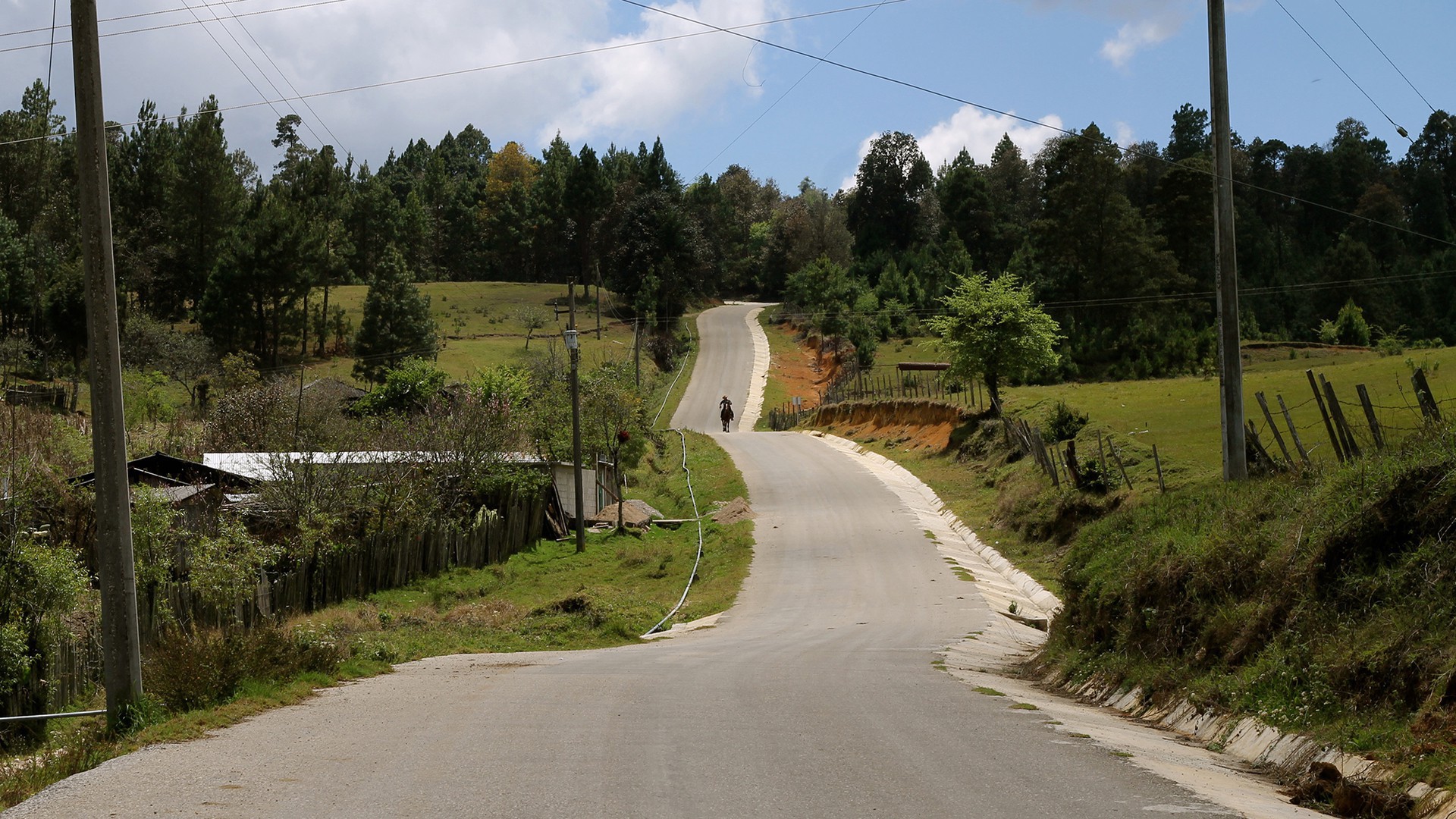
As the farmer’s only son, Felix is the heir to Moises’ land and future as a farmer. But the young man’s only dream, he said, is to study engineering in the U.S.
“It’s stupid to dream, and I will never be able to see America,” Felix said. “I will be here in Chiapas forever.”
NAFTA is not part of the curriculum in the one-room rural schoolhouse that has chairs but no desks where Felix goes to school every day. He practices English and learns basic math but not much else. Like his father, his understanding of the impact of the agreement comes from years of firsthand experience.
Signs that de la Cruz worries about the future are in his eyes and show on his callused hands, Felix said. He feels guilty about going to school instead of helping more at home.
“There are lines around his eyes and his mouth,” the son added. “When our farm struggles, we feel it deep in our hearts.”
As school winds down, Felix is prepared to shoulder some of his father’s discontent.
“I have to be a man now, even if that means I will be worried all the time,” he said. “This is our life.”
For people like the de la Cruz family who live in extreme poverty, not much has changed financially since the NAFTA was signed 20 years ago.
But the consul general of Mexico in Phoenix, Robert Rodriguez Hernandez, said overall NAFTA has been beneficial for the country. At the time the agreement was signed, he said, Mexico had a closed economy reeling from debt. The country had mass unemployment and corruption. Now Mexicans have the same access to consumer goods as their neighbors in the U.S., he added.
“The agreement worked well for the country, even if South Mexico didn’t feel it as much,” Rodriguez Hernandez said.
Raymond Robertson, a professor a Macalester College in St. Paul, Minn., conducted a study that said NAFTA liberalized the Mexican economy but did not engender change where it was needed most: in poverty-ridden communities like Buena Vista.
Robertson added that supporters of the agreement measure only the increasing gross domestic product in the two countries rather than growth in jobs and wages.
A minimum wage earner in Mexico can buy 38 percent fewer consumer items – such as food and clothes – than on the day when NAFTA took effect in 1994, Robertson’s study reported.
“It goes without saying the agreement did not create jobs like it was supposed to,” he said.
It did, however, create new and expanding markets in the north. U.S. agricultural companies partnered with Mexican producers to dramatically increase import of winter vegetables and fruit.
In Nogales, Arizona, for example, more than 120,000 trucks cross into the U.S. annually hauling $2.5 billion in winter tomatoes, squash, cucumbers, peppers and fruit mainly from the Northern Mexico states of Sinaloa and Sonora, according to a June 2013 University of Arizona study.
At the other end of the country, de la Cruz and his family don’t make money. Instead he spends his few pesos to moderately try to keep up with tech-savvy farming techniques.
Director for the Center for the Study of Rural Change in Mexico Peter Rosset said farmers have lost their autonomy over the production process of corn and other goods, making it impossible for them to make a living.
“In fact, rural farmers are making a quarter of what they did as far back as 1982, and even then they weren’t making very much,” Rosset added.
In addition, de la Cruz said he doesn’t make much either at his construction job – generally about $1 a day – in San Cristóbal de las Casas, where Rosset lives and works.
De la Cruz doesn’t make anything for the corn he grows, and when it’s harvest season he has to take time off work and has no income. Those are the toughest times, he said.

While the de la Cruz family chose to stay on its land, increasing numbers of impoverished Mexicans did not over the past 20 years. Rosset said his studies revealed more than 6.2 million Mexicans migrated north after NAFTA.
“Agribusiness is this juggernaut driving people off the land,” he said.
These farmers and their families migrate to the cities, contributing to overcrowding, unemployment and homelessness. There is also more crime, Rosset added.
“Farmers have to face the facts: You might not make a living in South Mexico anymore,” he said.
De la Cruz, sitting on a tree stump in his kitchen with two ears of corn in hand, doesn’t comprehend that statement.
All he and his son know is Buena Vista and their role as corn farmers in their small community.
“Corn is born here, and I was born here,” de la Cruz said. “We both want to stay.”

